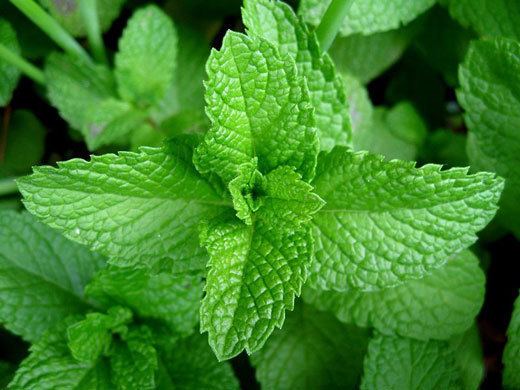Kingdom Plantae Family Lamiaceae Tribe Mentheae Scientific name Mentha spicata Higher classification Mint | Order Lamiales Subfamily Nepetoideae Genus Mentha Rank Species | |
 | ||
Conservation status Least Concern (Population stable) Similar Mint, Peppermint, Water, Basil, Lemon balm | ||
Spearmint, or spear mint (Mentha spicata) (also known as Mentha viridis) is a species of mint native to much of Europe and Asia (Middle East, Himalayas, China etc.), and naturalized in parts of northern and western Africa, North America, and South America, as well as various oceanic islands.
Contents
- Mint benefits medicinal properties of mint plant leaves spearmint
- Description
- Cultivation
- Oil uses
- Beverages
- Health effects
- References

- Mentha spicata subsp. condensata (Briq.) Greuter & Burdet - Mediterranean region; naturalized in New Zealand
- Mentha spicata subsp. spicata - most of species range

Mint benefits medicinal properties of mint plant leaves spearmint
Description

It is a herbaceous, rhizomatous, perennial plant growing 30–100 cm tall, with variably hairless to hairy stems and foliage, and a wide-spreading fleshy underground rhizome. The leaves are 5–9 cm long and 1.5–3 cm broad, with a serrated margin. The stem is square-shaped, a trademark of the mint family of herbs. Spearmint produces flowers in slender spikes, each flower pink or white, 2.5–3 mm long, and broad.

Hybrids involving spearmint include Mentha × piperita (peppermint; hybrid with Mentha aquatica), Mentha × gracilis (ginger mint, syn. M. cardiaca; hybrid with Mentha arvensis), and Mentha × villosa (large apple mint, hybrid with Mentha suaveolens).
The name 'spear' mint derives from the pointed leaf tips.
Cultivation
Spearmint grows well in nearly all temperate climates. Gardeners often grow it in pots or planters due to its invasive, spreading rhizomes. The plant prefers partial shade, but can flourish in full sun to mostly shade. Spearmint is best suited to loamy soils with abundant organic material.
Spearmint leaves can be used fresh, dried, or frozen. They can also be preserved in salt, sugar, sugar syrup, alcohol, or oil. The leaves lose their aromatic appeal after the plant flowers. It can be dried by cutting just before, or right (at peak) as the flowers open, about one-half to three-quarters the way down the stalk (leaving smaller shoots room to grow). Some dispute exists as to what drying method works best; some prefer different materials (such as plastic or cloth) and different lighting conditions (such as darkness or sunlight).
Oil uses
Spearmint is used for its aromatic oil, referred to as oil of spearmint. The most abundant compound in spearmint oil is R-(–)-carvone, which gives spearmint its distinctive smell. Spearmint oil also contains significant amounts of limonene, dihydrocarvone, and 1,8-cineol. Unlike oil of peppermint, oil of spearmint contains minimal amounts of menthol and menthone. It is used as a flavoring for toothpaste and confectionery, and is sometimes added to shampoos and soaps.
Used as a fumigant, spearmint essential oil is an effective insecticide against adult moths.
John Gerard's Herbal (1597) states that: "It is good against watering eyes and all manner of break outs on the head and sores. It is applied with salt to the biting of mad dogs," and that "They lay it on the stinging of wasps and bees with good success." He also mentions that "the smell rejoice the heart of man", for which cause they used to strew it in chambers and places of recreation, pleasure and repose, where feasts and banquets are made."
Beverages
The cultivar Mentha spicata 'Nana', the nana mint of Morocco, possesses a clear, pungent, but mild aroma, and is an essential ingredient of Moroccan tea.
Spearmint is an ingredient in several mixed drinks, such as the mojito and mint julep. Sweet tea, iced and flavored with spearmint, is a summer tradition in the Southern United States.
Health effects
In preliminary research, spearmint essential oil showed potential for antifungal activity against food poisoning pathogens and had no evidence of mutagenicity in the Ames test.
